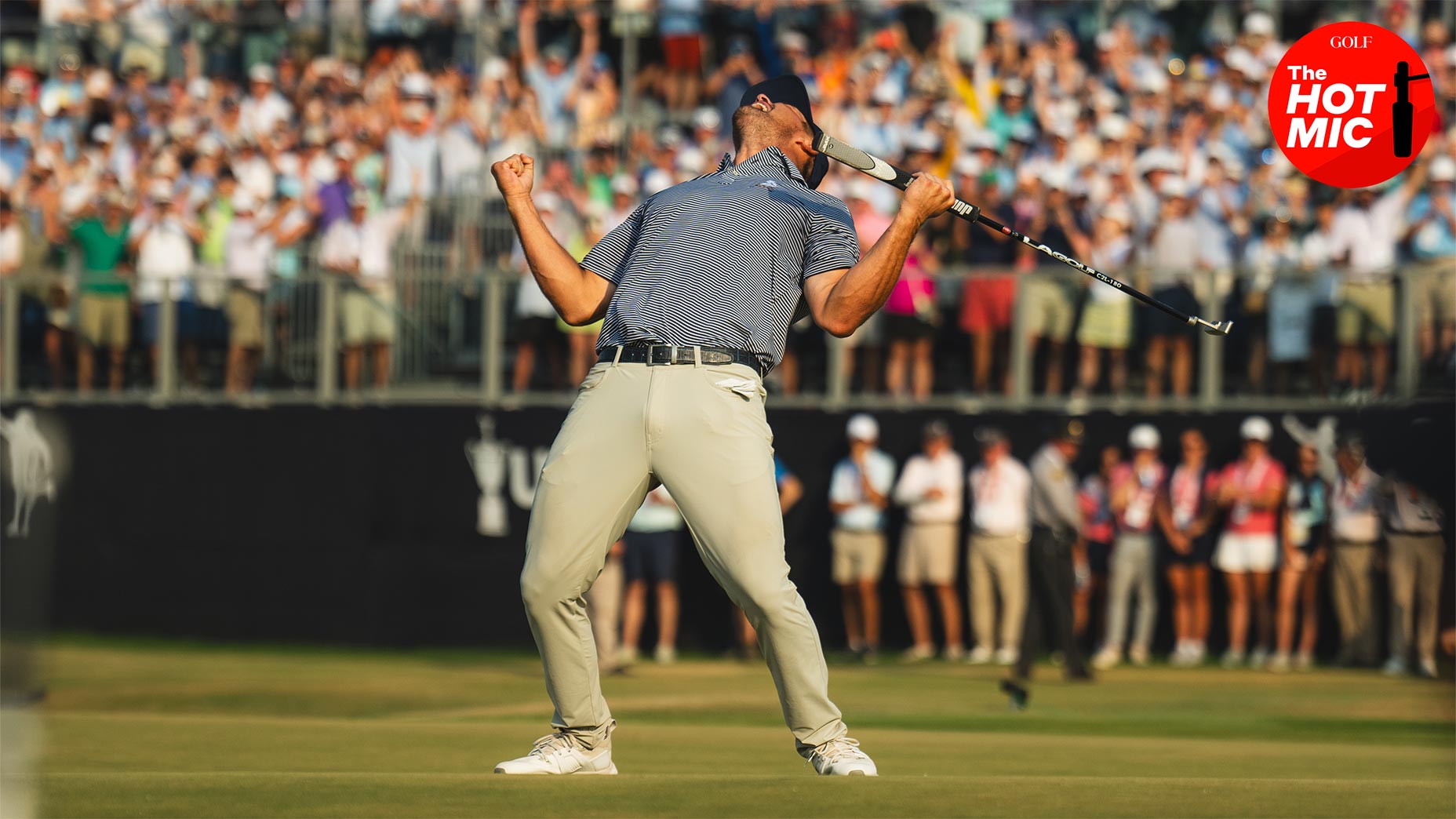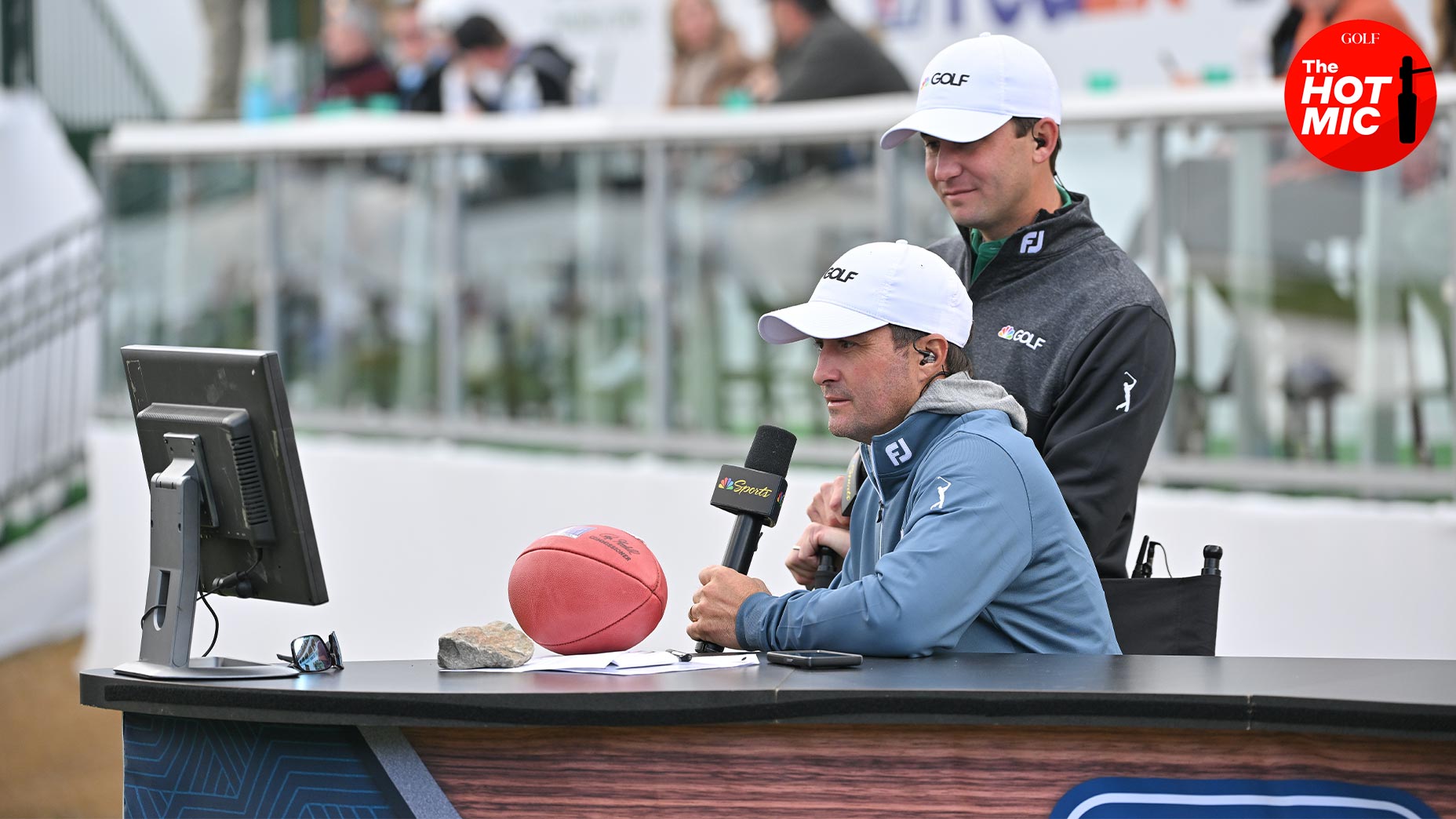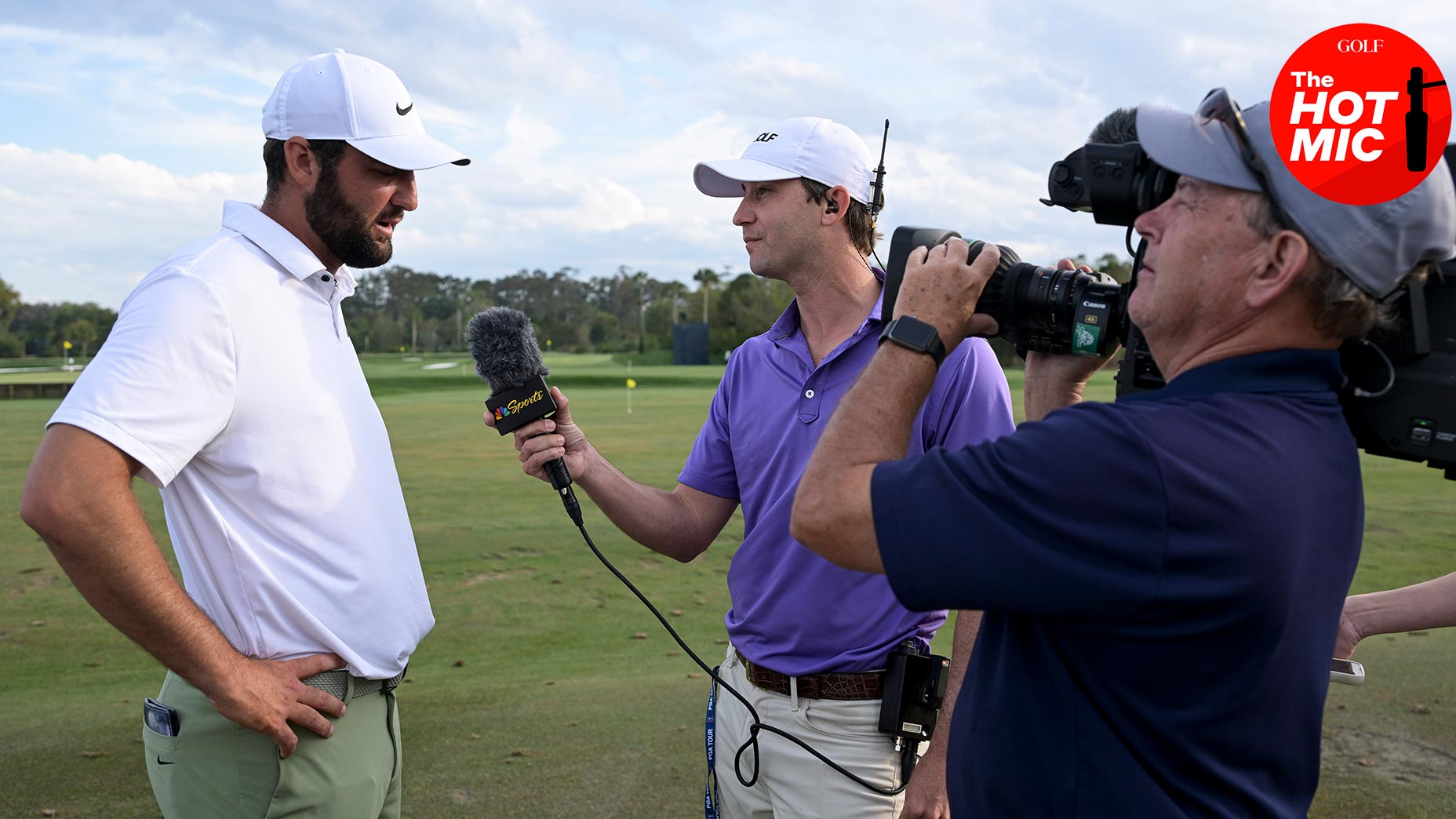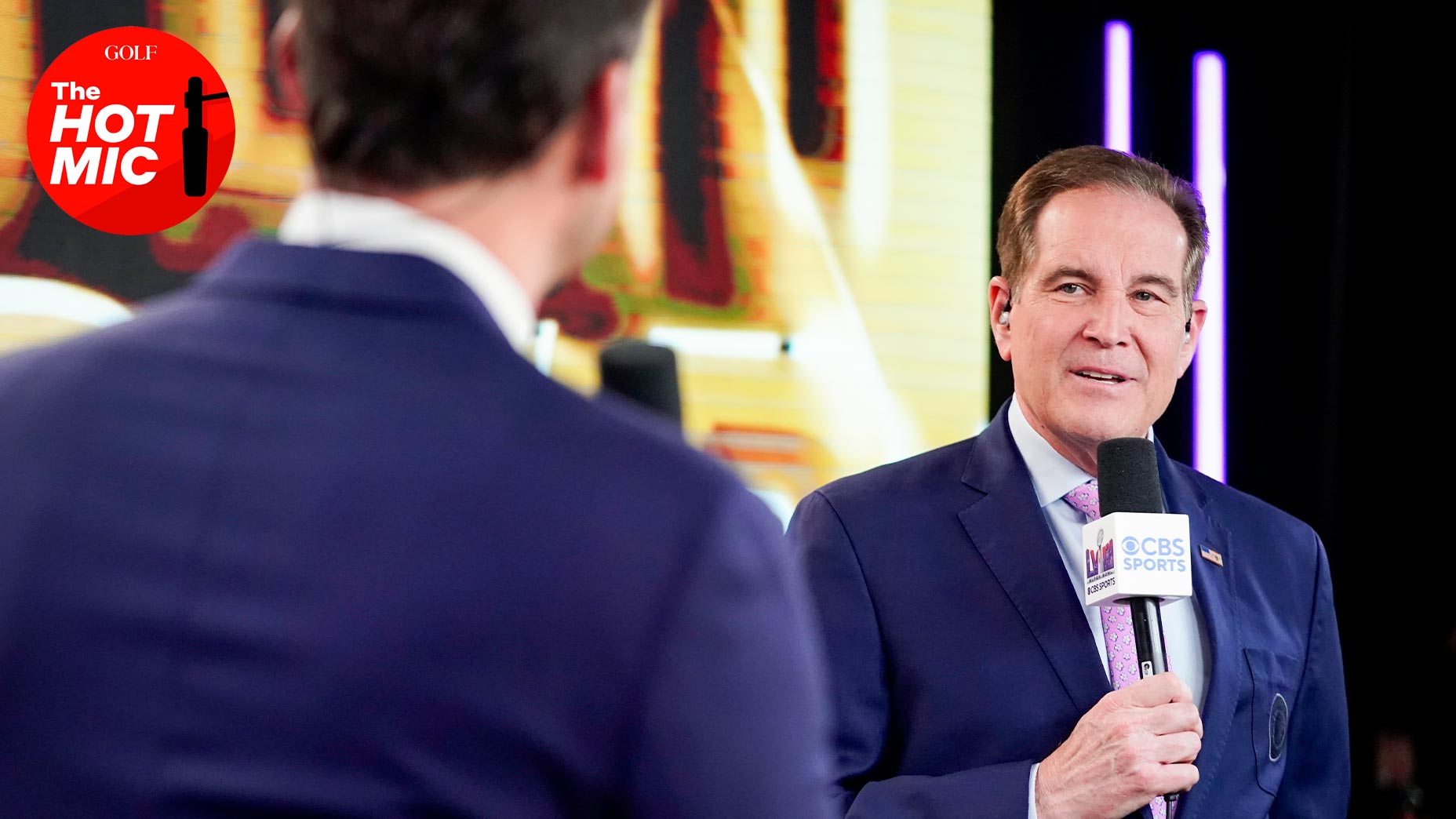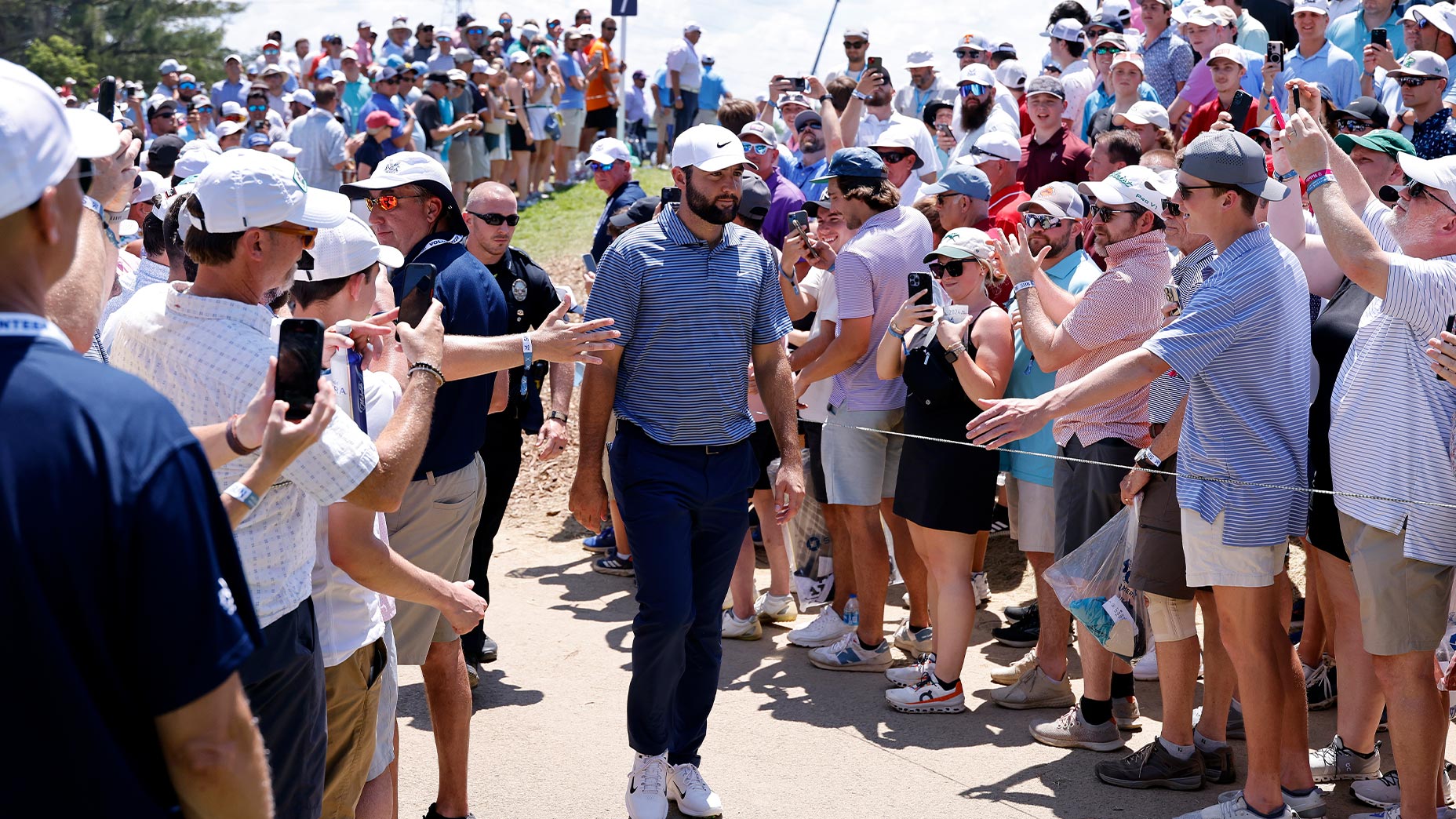The surprising winner of PGA Tour-PIF madness? The media
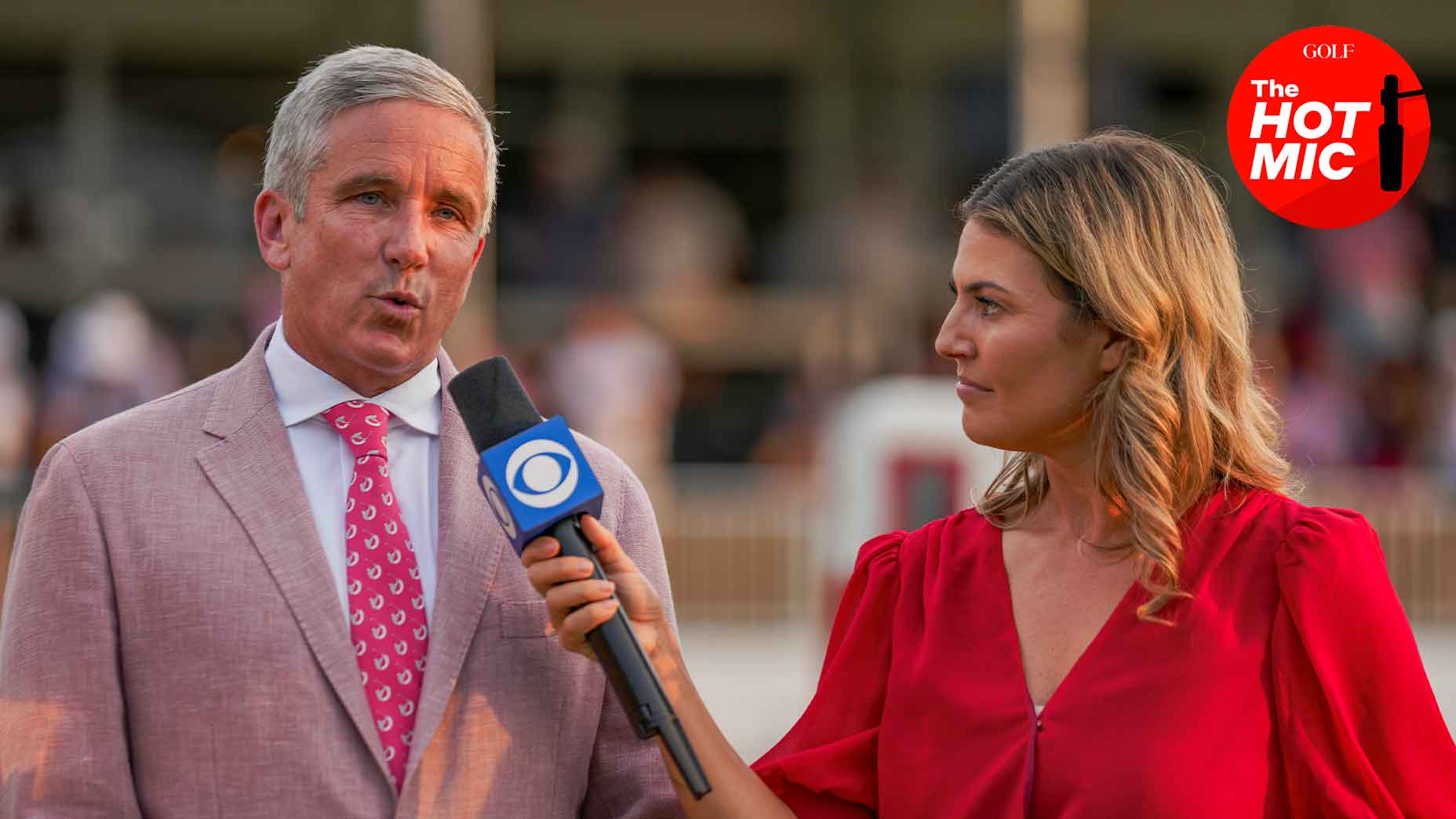
The PGA Tour's ratings remained mostly flat, year-over-year.
Getty Images
Norb Gambuzza remembers the moment the PGA Tour media landscape began to change.
It was late August 2021 at East Lake Golf Club, and the Tour Championship was about to begin. Gambuzza — the Tour’s SVP of Media and Gaming — was mingling with other senior leadership near the first tee box when he suddenly found himself surrounded.
To his left were two of sports television’s most connected names: Vox executive producer Chad Mumm and Box-to-Box Films co-founder Paul Martin; to his right was the most powerful man at the PGA Tour, commissioner Jay Monahan.
Martin and Mumm approached the Tour months earlier hoping to produce a massive, season-long docuseries following professional golf. They received early interest from the Tour, but with the Tour calendar barreling towards the end of the season, the two producers still hadn’t wrangled any formal commitment.
The importance of the conversation at East Lake was lost on no one. The Tour’s 100-percent support was necessary for the show’s existence — to say nothing of its eventual success. Without it, Martin and Mumm had nothing.
As the group gathered again, Martin and Mumm made one final pitch — their vision, their goals, their desires. Finally, after what felt like a while, Monahan spoke up.
“Okay,” he told Martin and Mumm. “Let’s do this.”
Gambuzza smiles as he remembers that now.
“It was just fantastic.”
What no one at East Lake that day knew — what they couldn’t know — was the way the golf media landscape would change over the next 24 months. The way Saudi-backed LIV Golf would charge onto the scene; the way many of the Tour’s most beloved players would abandon them, turning the business of professional golf into an existential battle for the future of the sport; the way Monahan and the Tour would wind up brokering an uneasy peace with those same Saudi backers less than a year later.
Monahan’s legacy shifted inexorably in the two years following that original East Lake agreement. His actions changed pro golf. And in a strange twist of fate, Mumm and Martin’s cameras captured it all — good, bad and ugly — for Netflix’s Full Swing.
It’s an inherently awkward situation. Tour officials are still reticent to mention LIV Golf by name some 18 months into its existence, and they’re even more cautious to avoid direct talk about the framework agreement with the Saudi Public Investment Fund that could see the two leagues united. (Gambuzza referred to the framework agreement only as “the events of June 6” during the course of our interview.) It is even more awkward considering this strange reality: in the billion-dollar golf media business, the LIV quagmire has been…pretty good for the PGA Tour.
According to the latest Tour numbers gathered after the 2023 season, interest in the game continues to surge in the age of Saudi influence, and interest is good for business. LIV has helped reintroduce scores of casual sports fans to pro golf, and efforts across the Tour’s media portfolio — from Netflix and ESPN+ to linear television — have been the beneficiaries.
It’s hard to say precisely how beneficial Mumm and Martin’s Full Swing has been for the sport (Netflix is famously protective of its viewership data), but a limited data sample collected by the Tour illustrates how the show has helped golf make strides with casual sports fans. According to data gathered by Nielsen for the Tour, 63 percent of U.S.-based Full Swing viewers tuned into a PGA Tour telecast within two months of the show’s February debut, 11 percent of whom had not watched a Tour broadcast in the six months preceding the show. According to subsequent Tour focus group testing, 42 percent of those who have watched at least some of the show say they spend more time engaging with golf after tuning in.
Those numbers are flawed — devoid of the kind of detailed data we’re used to receiving with live TV broadcasts — but they tell some of a larger story that Gambuzza says was visible immediately after the show debuted.
“This is not about us just doing a deal with Netflix and the PGA Tour deriving value from it,” he said. “It was about how Full Swing could help elevate the visibility of everything we’re doing. And in the end, that should be good for Golf Channel, CBS, NBC, the Waste Management Phoenix Open. So yeah, I can say all those things, but I can’t tell you 75,000 viewers tuned in incrementally during the month of July on CBS directly because of Full Swing — and that’s okay.”
The rising tides philosophy has already paid considerable dividends for the Tour, which has seen player social media followings explode and a younger demographic (more than 60 percent of whom are between the ages of 25-54) flock toward the show. Netflix-driven exposure might not be an explicit moneymaker for the Tour (financials of the agreement amount to pennies compared to multi-billion-dollar broadcast rights contracts), but that doesn’t mean it isn’t helping the bottom line.
“This is, at its heart, a documentary, right? This is not like the equivalent of a massive media company doing a traditional rights deal with the PGA Tour,” Gambuzza said. “The platform that Netflix provides — the marketing muscle, the global distribution to 230+ million subscribers, that’s the value for the PGA Tour.”
Those gains help the Tour’s more traditional broadcast partners, too, who are competing for golf fans’ attention now more than ever. There was some concern that LIV might kneecap the Tour’s TV partners, who signed rights agreements spanning a decade and totaling several billion dollars back in early 2020. Rights agreements are negotiated based on the value of the TV product, and in LIV’s earliest stages, many network execs were uneasy about paying the same money for a television show missing half its starring cast.
But at the end of 2023, some of the discomfort has faded after a series of strong ratings performances by Tour broadcasts. Both NBC and CBS reported year-over-year ratings bumps of a few percentage points (three percent for NBC excluding the FedEx Cup Playoffs; one percent for CBS in its first year covering the postseason) at a time in which sports TV ratings are falling across the board; while ESPN+ reported for a second straight year that PGA Tour Live was streamed by more fans than any other live content on the platform. (ESPN also reported that streaming numbers were up year-over-year.)
“We’ve been in business with CBS for 50 years,” Gambuzza says. “There’s a ratings story, and then there’s a business and financial story. The golf [TV] business is really healthy.”
This is particularly good news for the Tour, which very much needs the bargaining power (and $800 million or so annually) its TV and media partners bring in as it enters the final stages of negotiations with the Saudi Public Investment Fund. The media rights bargaining chip works twofold for the Tour, which can point to billions in incoming revenue as a walk-away argument should negotiations sour, and can use the exposure and revenue provided by those agreements as one of the key assets of the for-profit entity shared with the PIF. In either case, though, it’s easier to make that argument when ratings are up; especially in the face of an unprecedented competitor funded by their negotiating counterpart.
But even those conversations may miss the broader point. While the proposed merger is the story in pro golf right now, it is just one piece of a larger Tour media strategy that has made significant strides since Monahan greenlit Full Swing in August ’21. The Tour as we know it has changed substantially in the last few years, and those changes have come at a pace foreign to Tour bureaucracy. The success or failure of those media initiatives ultimately has only one judge: viewership. (This is one of the reasons, I imagine, that Gambuzza was keen to point out the Tour’s focus on maximizing the viewership value of “all” events in ’24, particularly the ones without “signature event” status).
Success in the short term might help the PGA Tour with its negotiations with the PIF, but success in the longer term is what will keep the PGA Tour — and the sport of golf more generally — growing in the minds of American sports fans.
“We know ultimately that viewership is their currency,” Gambuzza says. “The more people that are watching, the more people are feeding the whole universe of golf — supporting our tournaments, supporting our players, coming onto our platforms.”
There have been many steps in that direction in recent years, but some of the clearest ones won’t be found on an Excel spreadsheet. Look no further than Full Swing, which would not exist if not for a significant leap of faith from the Tour.
The show’s mere existence was a major accomplishment for Gambuzza and the PGA Tour media team, which fought hard to generate internal momentum for the project and later, to convince players and stakeholders to follow the Tour’s lead. But those efforts didn’t guarantee the show would be a success. Right up until the show’s debut, nobody knew how audiences would respond to a docuseries based on a slow-moving, highly stratified sport, or how the show would perform within Netflix’s space-age algorithm. Even Netflix struggled to predict how the show would do.
As Gambuzza tells it, the streaming giant was wary to promise Full Swing anything beyond season 1 until the show arrived in February. Netflix executives gave golf’s stakeholders a calendar window during which they would make the final decision to approve a second season or cancel the show altogether. The Tour, not wanting to lose the first eight events from a possible season two, made one final leap of faith: granting Full Swing crews access to shoot early-season Tour events without knowing if the footage would ever be used.
Finally, Full Swing arrived, and it was a hit — landing on Netflix “Top 10” lists around the world. Its characters, Tour members, were overnight celebrities. The golf world was abuzz, but the jury was still out on Netflix. The days ticked by slowly following the show’s debut. Now it was the Tour’s time to wait for an answer.
A few days after the renewal window opened, the Tour received an unexpected call. Netflix had made an early decision. Full Swing was renewed for a second season.
Gambuzza was thrilled, but only for a few moments as a different reality set in. The PGA Tour media landscape had just changed. Again.





